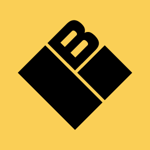Seleccione este tipo de licencia cuando esté desarrollando una aplicación app para iOS, Android o Windows Phone, y vaya a incrustar el archivo en el código de su aplicación móvil. va a incrustar el archivo fuente en el código de su aplicación móvil.
Balloon
por Bitstream- Aa Glifos
-
¡Mejor PrecioPaquetes de familia
- Estilos individuales
- Especificaciones técnicas
- Licencias
Por estilo:
$26.66
Paquete de 3 estilos:
$79.99
Sobre la familia Balloon Fuente
Otro guión informal diseñado en 1939 por M.K. Kaufmann para ATF.
Diseñadores: Max R. Kaufmann
Editorial: Bitstream
Fundición: Bitstream
Propietario del diseño: Bitstream
MyFonts debut: 1 de enero de 2000

Acerca de Bitstream
Bitstream es conocida entre los entusiastas y profesionales de la tipografía por ser una de las empresas que lideran el camino hacia la democratización de la tipografía. Durante siglos, el mundo de la tipografía había sido dominio exclusivo de expertos tipógrafos que trabajaban en grandes y engorrosas prensas. Sin embargo, con el nacimiento de la tipografía digital se produjo una revolución en el sector que permitió a Bitstream, una de las primeras fundiciones tipográficas digitales, contribuir al crecimiento de la industria editorial desktop . Los fundadores de la empresa compartían una visión según la cual la publicación en desktop y la tipografía digital abrirían puertas y permitirían el acceso a un público más amplio de tipos de letra antes exclusivos. Con el tiempo, esta idea de abrir el mercado tipográfico condujo al desarrollo de fuentes , como Amerigo y New Lincoln Gothic, diseños que desempeñaron un papel fundamental en el lanzamiento y el éxito final de la publicación en desktop . Con tipos superventas como Futura en su catálogo, esta biblioteca tuvo un enorme impacto en la industria tipográfica y contribuyó a convertirla en lo que es hoy.
Seguir leyendo
Leer menos